Anodized Piercing Jewelry:
Color, Comfort, and Confidence
What Is Anodizing and Why Does It Matter?
Anodizing is a specialized electrochemical technique that modifies the surface of metals—most commonly titanium and niobium—by creating a controlled oxide layer. This layer refracts light to generate vibrant colors without the use of dyes or coatings. The process enhances not only the look of the jewelry but also its durability and body compatibility.
Unlike painting or plating, anodizing does not apply pigment to the metal’s surface. Instead, color emerges from the interaction of light with the oxide film’s thickness. As a result, anodized jewelry offers a long-lasting, fade-resistant color that is part of the metal itself.
Because anodized titanium retains its hypoallergenic properties, it remains a safe and gentle option for even the most sensitive skin. The wide color spectrum available allows clients to make their piercing jewelry truly personal and expressive.
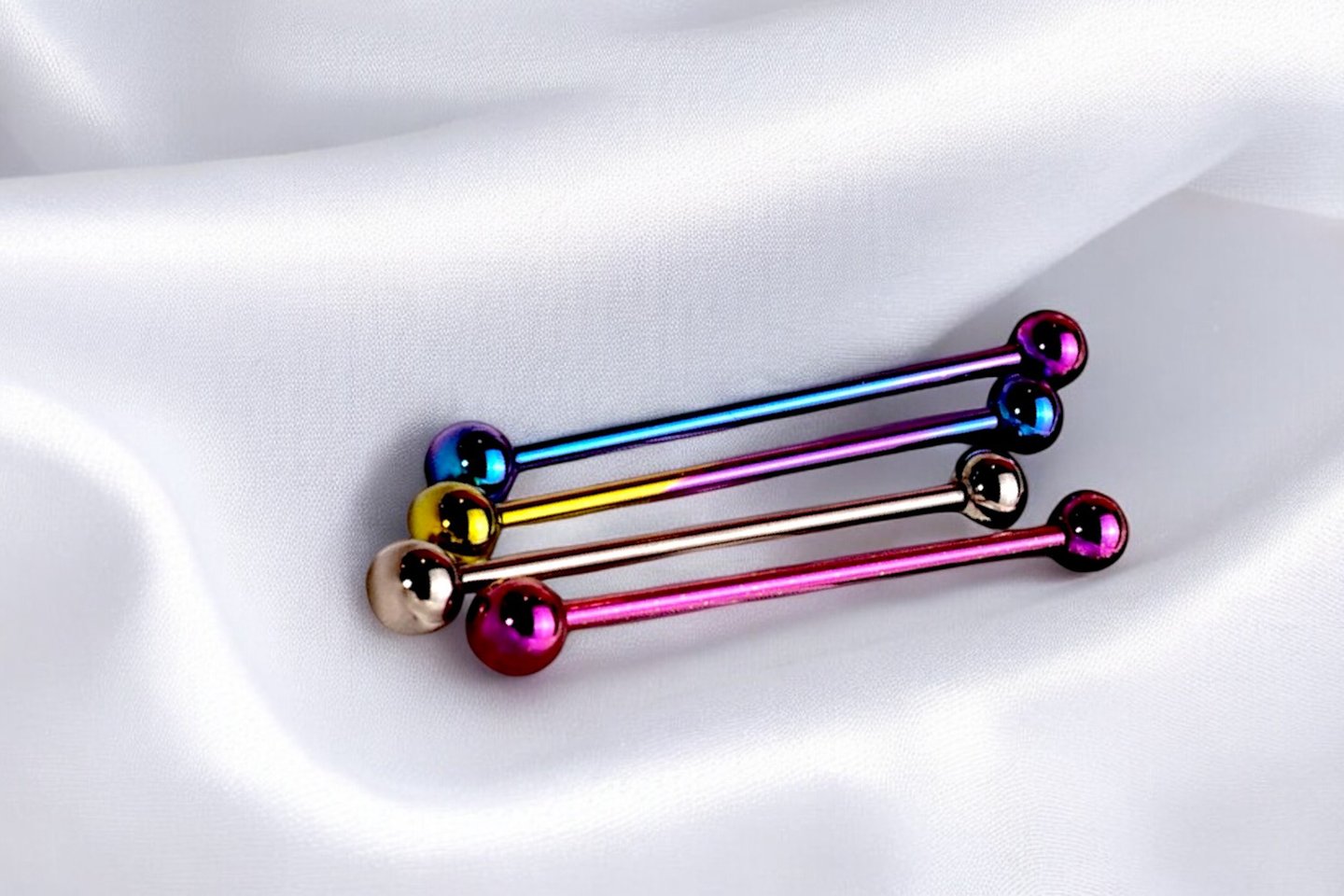
Key Benefits of Anodized
Jewelry for Piercings
- Safe for New Piercings: Titanium and niobium used in anodizing are biocompatible and highly recommended for initial insertions.
- Nickel-Free: These materials eliminate the common allergy triggers associated with lower-quality metals.
- No Adverse Tissue Reactions: Anodized jewelry won’t irritate the skin or cause inflammation.
- Extensive Color Variety: Choose from soft golds, bold blues, purples, turquoise, greens, and unique iridescent finishes.
- Style Expression: Match your jewelry to your mood, your wardrobe, or your eye color—anodizing expands your options for personal style.
- Most Popular Shades: Sky blue, amethyst purple, deep turquoise, bronze, lime yellow, and emerald green.
- Fade-Resistant Color: The oxide layer becomes part of the metal’s structure, so the color won’t wear off.
- Everyday Durability: Resistant to sweat, water, and friction—great for active lifestyles and sports.
- Color Refresh Possible: Jewelry can be re-anodized to change or revitalize its appearance over time.
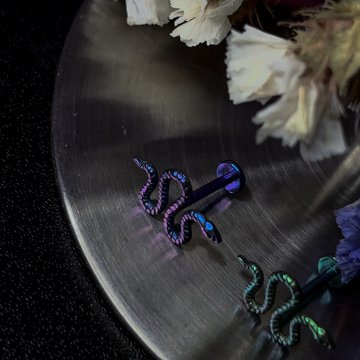
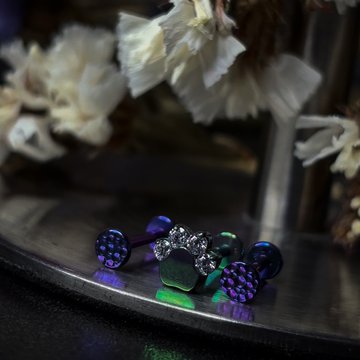
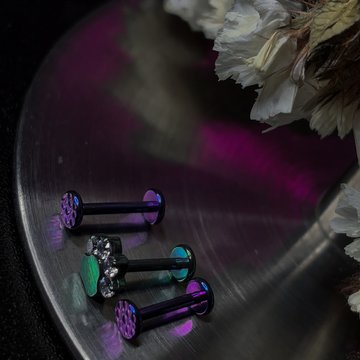
How the Anodizing Process
Works at Our Studio
- Cleaning & Prep
- The jewelry is professionally cleaned to remove oils or residues that could affect the result.
- Color Consultation
- We help you select a shade from our curated anodizing palette to match your look or preference.
- Anodizing Treatment
- The jewelry is placed in an anodizing unit, where electrical voltage determines the oxide layer’s thickness—and thus the resulting color.
- Final Sterilization
- Once the color is set, we sterilize the jewelry and seal it in sterile packaging, ready for safe use.
We anodize both our in-stock jewelry and your personal pieces—if they’re made from ASTM F136 titanium or medical-grade niobium.

How Is Color Created
and What Shades Are Available?
The colors you see on anodized jewelry aren’t painted on—they’re the result of precise light interference through the oxide layer.
By adjusting the voltage, we can control the layer’s thickness and create specific colors.
Here are some common voltage ranges and the shades they produce:
- 15–20 volts: warm golds, bronze
- 25–30 volts: rich cobalt blue, violet
- 35–40 volts: turquoise, light blue
- 45–50 volts: green, citrus yellow
- 55+ volts: rose pink, aqua blue, rainbow-like “chameleon” effects
Thanks to advanced equipment, we’re able to deliver smooth, even color results that are both beautiful and stable.
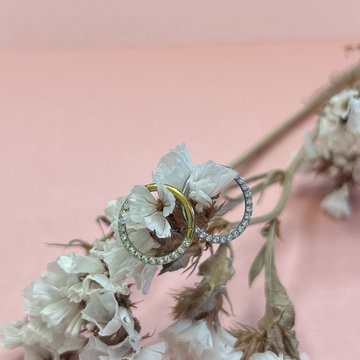
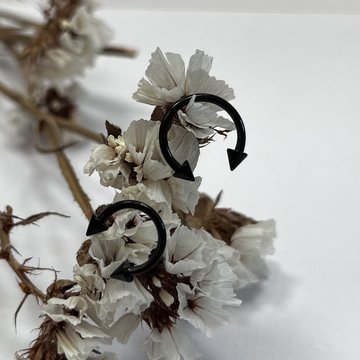
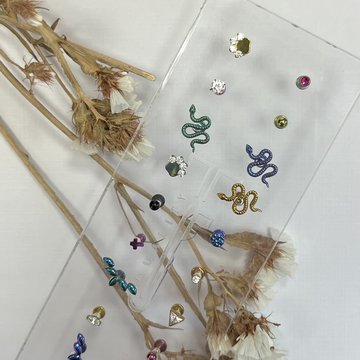
Anodizing Myths — Debunked
Myth: The color will fade or rub off
Truth: Because the color is part of the metal structure, it won’t peel or flake off over time.
Myth: Anodizing is just fancy painting
Truth: No dyes or pigments are involved. The hue comes from natural light refraction in the oxide layer.
Myth: It’s unsafe for the body
Truth: Anodizing is one of the safest methods to color body-safe metals and has been widely used in medical implants.
Why Clients Trust Our Studio
- On-site anodizing ensures control, sterility, and speed—no need to send your jewelry elsewhere.
- Trained professionals perform the process using certified equipment and safety protocols.
- Custom results based on your skin tone, aesthetic, or favorite look.
- Sterile finish: Every piece is re-sterilized and sealed before it’s ready for wear.
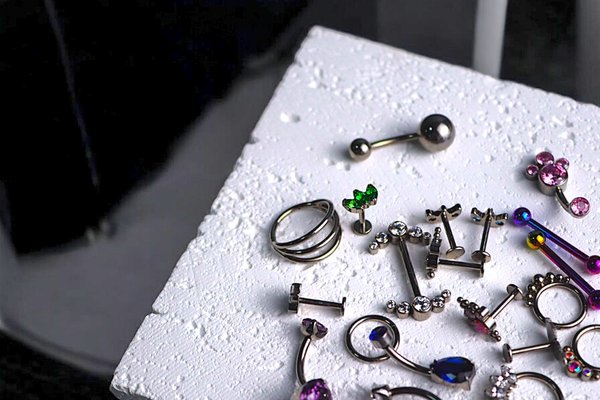
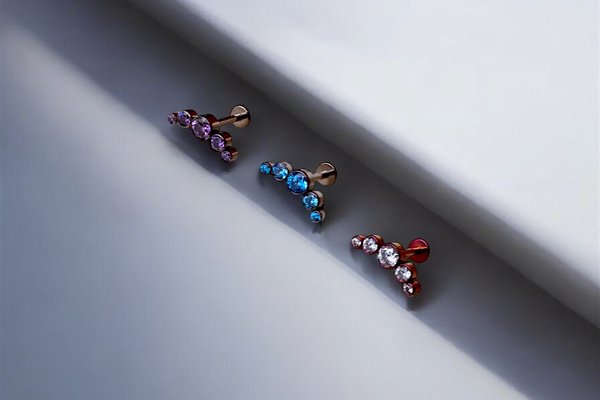
- Can I anodize jewelry that already has a color?
- Yes, we can remove the previous oxide layer and apply a new one, provided the piece is made from compatible metal.
- Will it still be hypoallergenic after anodizing?
- Absolutely—titanium and niobium maintain their hypoallergenic properties even after anodizing.
- Can I request a very specific color match?
- While certain shades are voltage-dependent, we can work closely with you to get as close as possible to your desired tone.
- Is it possible to achieve multicolor or gradient effects?
- In classic anodizing, only single-tone results are reliable. For complex finishes, we can recommend creative solutions.
- How long does the process take?
- Anodizing can usually be done the same day, depending on your jewelry and shade selection.
Ready to Add Some Color?
Let us help you create a unique, bold look that reflects your individuality.
Contact us to book your anodizing session—whether it’s for brand-new jewelry or a beloved piece you want to refresh.
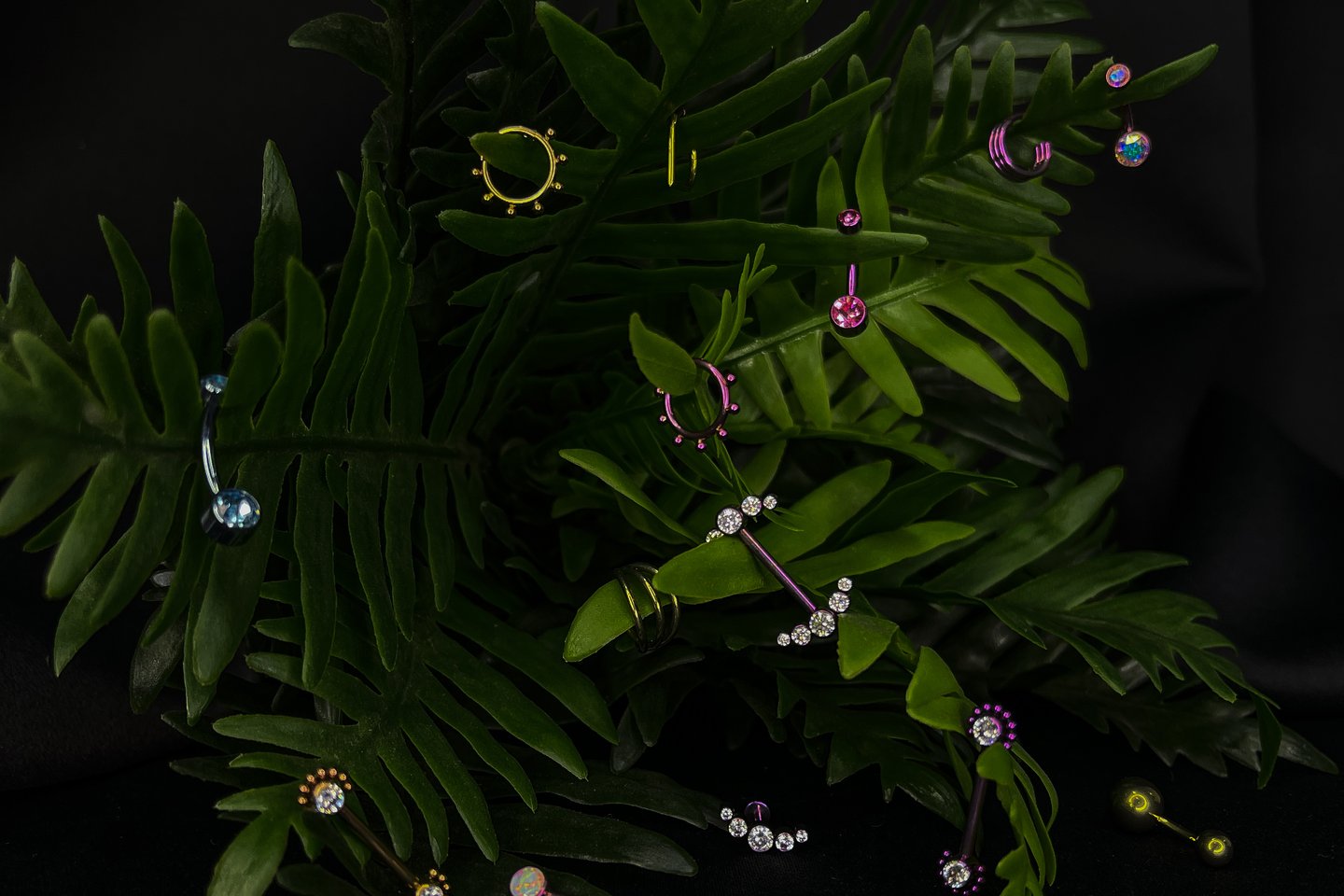


 Create a sketch in the VEAN TATTOO AI generator
Create a sketch in the VEAN TATTOO AI generator




